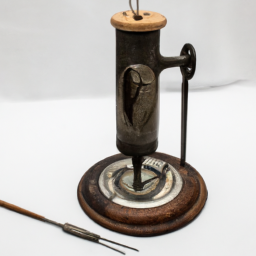
History of Sewing Needles
Sewing needles have been an essential tool in human history, aiding in the creation and repair of countless fabric items throughout the ages. With their humble beginnings in ancient times, sewing needles have evolved to become a vital part of sewing techniques and craftsmanship today.
The Ancient Origins
The earliest evidence of sewing needles dates back to ancient times. Archaeological discoveries have uncovered bone, ivory, and even iron needles from various ancient civilizations like the Egyptian, Chinese, and Mesopotamian cultures. These early needles were typically handcrafted from natural materials such as animal bones or horns.

The ancient Egyptians are credited with some of the earliest known metal needles. The discovery of copper and bronze needles in ancient tombs highlights their ingenuity in metalworking. These needles were used not only for sewing but also for embroidery, enabling the creation of exquisitely decorated garments.
The Middle Ages and Reinvention
During the Middle Ages, the art of needle-making reached new heights. European craftsmen developed techniques for producing fine needles made of steel. The widespread introduction of eye-pointed needles in the 14th century revolutionized sewing. These needles were easier to use and significantly increased sewing speed while reducing eye strain.

The needle-making process became more advanced, with skilled artisans creating needles of different sizes and shapes to cater to various garment types. By the 17th century, needles were being mass-produced in factories, allowing for their wider availability and affordability.
Modern Sewing Needles
In the 19th century, the Industrial Revolution brought significant advancements to the production of sewing needles. The introduction of specialized machinery allowed for large-scale production and the creation of even finer needles.

Today, sewing needles come in a wide variety of types, sizes, and materials. From hand needles to machine needles, each serves a specific purpose. Sharpened to perfection, machine needles are now designed to withstand the demands of high-speed sewing machines.
Furthermore, the development of specialized needles like embroidery needles, quilting needles, and leather needles has expanded the possibilities of needlecraft, allowing enthusiasts to explore various creative avenues.
The Legacy of Sewing Needles
The history of sewing needles showcases not only the evolution of a simple tool but also the ingenuity and creativity of mankind. From their humble beginnings as primitive bone tools to the finely crafted steel needles we have today, sewing needles have played an integral role in the development of textile arts.
As long as there is fabric to mend, garments to create, and crafts to explore, sewing needles will continue to be an indispensable part of human civilization.
Images Source:
Egyptian Needle – Wikimedia Commons
Medieval Needles – Wikimedia Commons
Industrial Needles - Flickr




